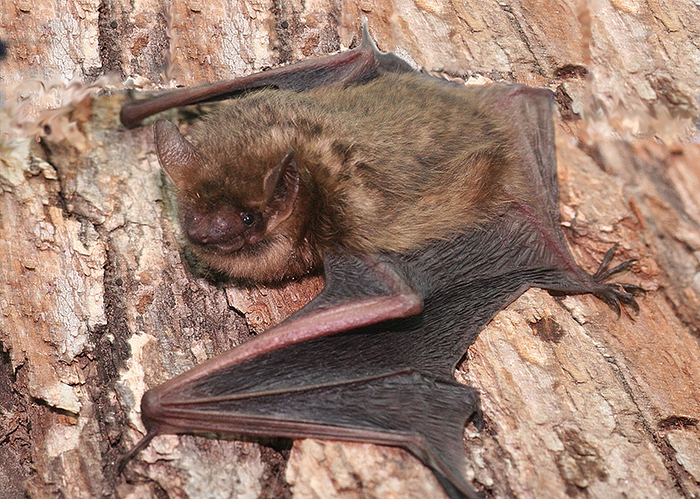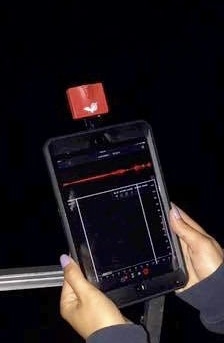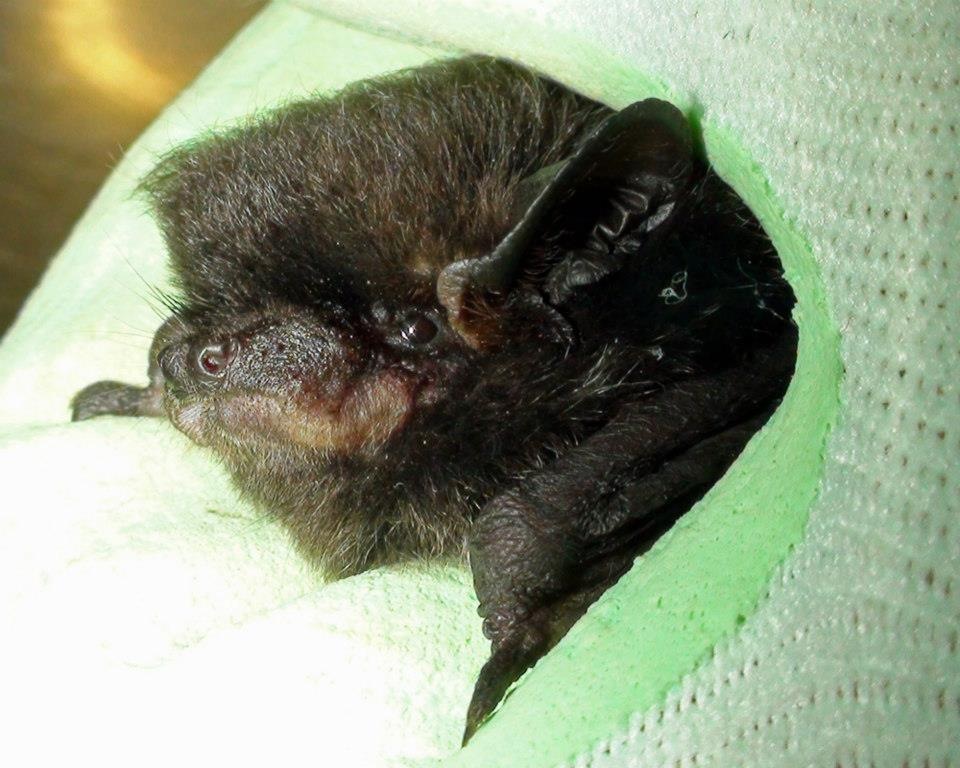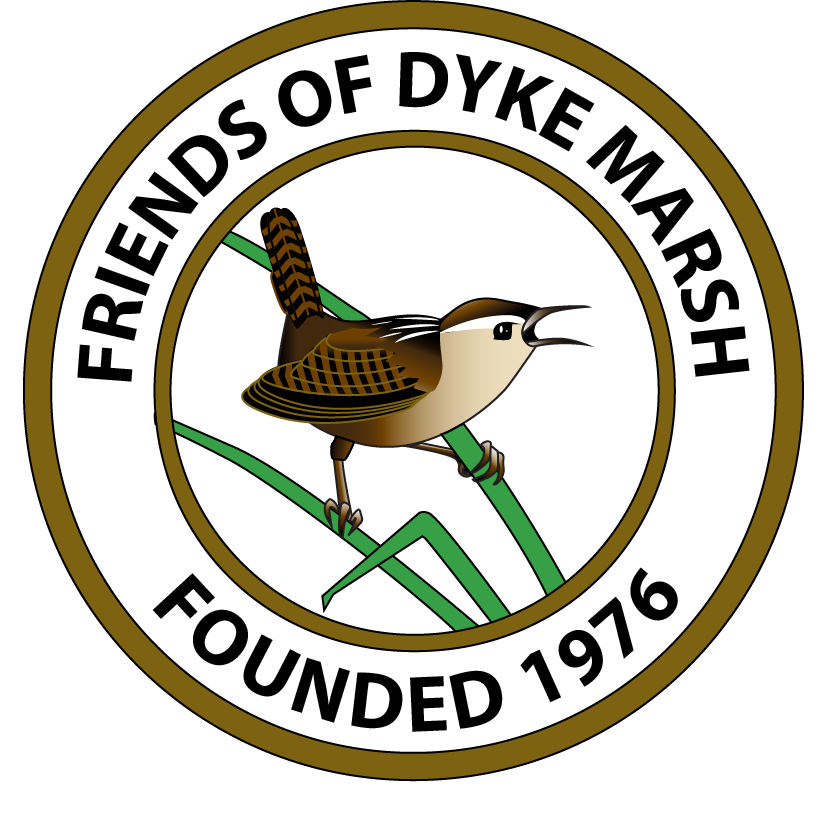On a sultry August 20, 2023, evening, an enthusiastic group of ten joined FODM board member Deborah Hammer to learn about the bats of Dyke Marsh.
Amid a chorus of cicadas and katydids, the group learned how Dyke Marsh offers an ideal habitat for many species of bats to both raise their young in the summer and hibernate over the winter.
 |
| A tri-colored bat (Perimyotis subflavius) Photo by Rich Sturges, Bat Conservation and Rescue of Virginia |
All of the species of Chiroptera (the scientific word for bats, literally meaning “hand-wing”) that live in Virginia are insectivorous and feed on thousands of beetles, gnats, mosquitoes, moths and other insects all night long. They are able to navigate safely in the dark and find their prey using echolocation. The frequency that bats use to echolocate is too high for humans to hear naturally. However, using Echo Meters™, sonar detectors from Wildlife Acoustics, the group could hear the bats as they deftly flew overhead, diving between trees and swooping over the water.
 |
| An echo meter, a type of sonar that can identify the echolocation of bats. Photo by Deborah Hammer |
As attendees watched the bats flying around in the twilight, they learned that most species of bats have only one pup per year, that there are over 1,400 species of bats in the world and about 17 species of bats in Virginia and that some species of bats are pollinators and disperse seeds.
 |
| A silver-haired bat (Lasionycteris noctivagans) in Deborah's gloves, a bat that she helped rehabilitate. Photo by Deborah Hammer |
Deborah explained that bats face many threats, including white-nose syndrome, loss of habitat and light pollution. On the walk, the Echo Meters detected three different bat species: big brown bats (Eptesicus fuscus), silver-haired bats (Lasionycteris noctivagans) and eastern red bats (Lasiurus borealis). For more information about local bats, check out this presentation by Deborah for FODM or visit the website of Bat Conservation and Rescue of Virginia.

